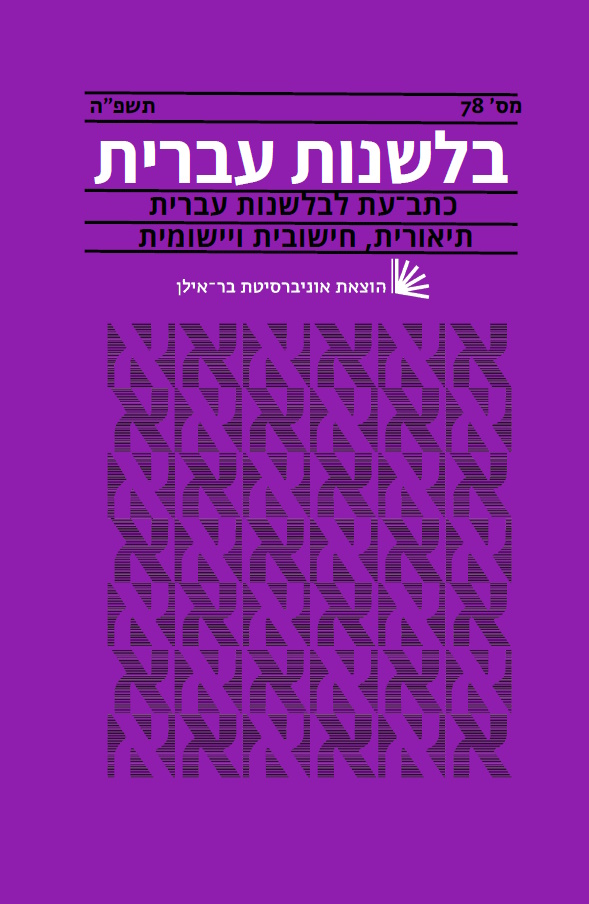Vocabulary Assessment in Hebrew as a Second Language to Arab Learners using the Lexical Diversity Measure
Keywords:
second language acquisition, writing assessment, vocabulary development, word type/word token, lexical measuresAbstract
This article tests the progress of Arabic speakers in the acquisition of written Hebrew vocabulary as a second language (L2), focusing on the lexical diversity measure. This measure is used to assess vocabulary range by testing the proportion of different words in a spoken or written text. This index is an important indicator of the learner’s language range and linguistic repertoire. It was originally developed in English and applied to Hebrew in previous studies using similar methodology, despite English being a more analytical language than Hebrew. The purpose of the paper is to present three methods (applications) of this index that are adapted to varying degrees to the semantic, morphological and orthographic characteristics of Hebrew, as well as to point out the advantages and limitations of each approach. In addition, it will also explore the effects of differences between each approach on the assessment of vocabulary acquisition. Furthermore, it will examine lexical diversity in relation to the increase in time spent acquiring L2.
This index was tested in Hebrew essays of Bedouin high school students at the beginning of the 11th grade and a year later according to three methods of assessing lexical diversity: classical, total, and automatic. Differences between the methods are based on the fact that it is not trivial to define a word, therefore, a division of the orthographic unit into its lexical and functional components is proposed for the total lexical diversity method. The two main advantages of this method: an adequate representation of the role of a word, and the frequency of a word in the text. Although these three methods found no significant increase in lexical diversity with the increase in the acquisition time of Hebrew as L2 to Arabic, statistically significant differences between the three methods of lexical diversity were identified. Furthermore, a negative correlation was observed between the values obtained in the results, and the level of adaptation of the methods in accordance with the characteristics of Hebrew.

